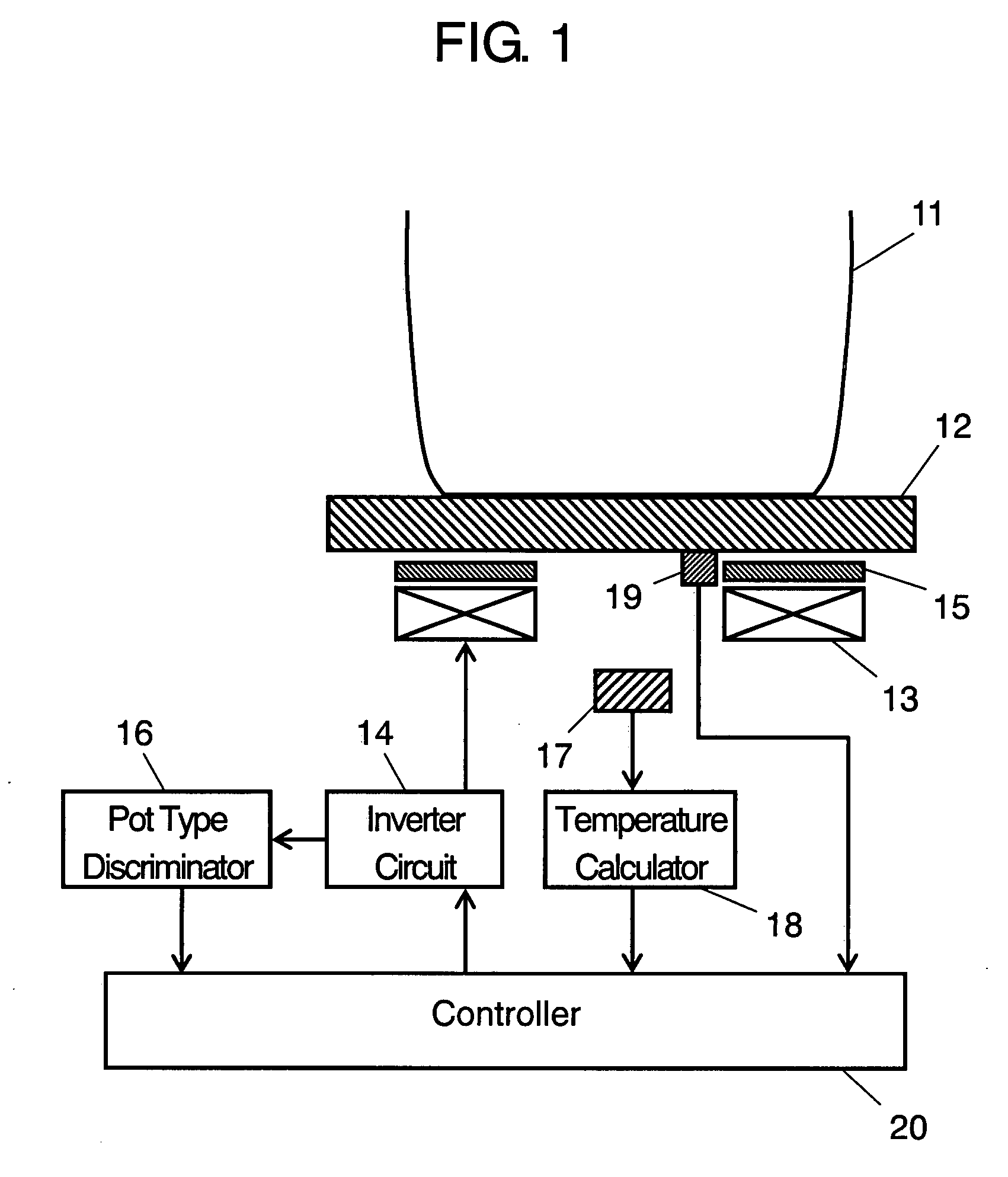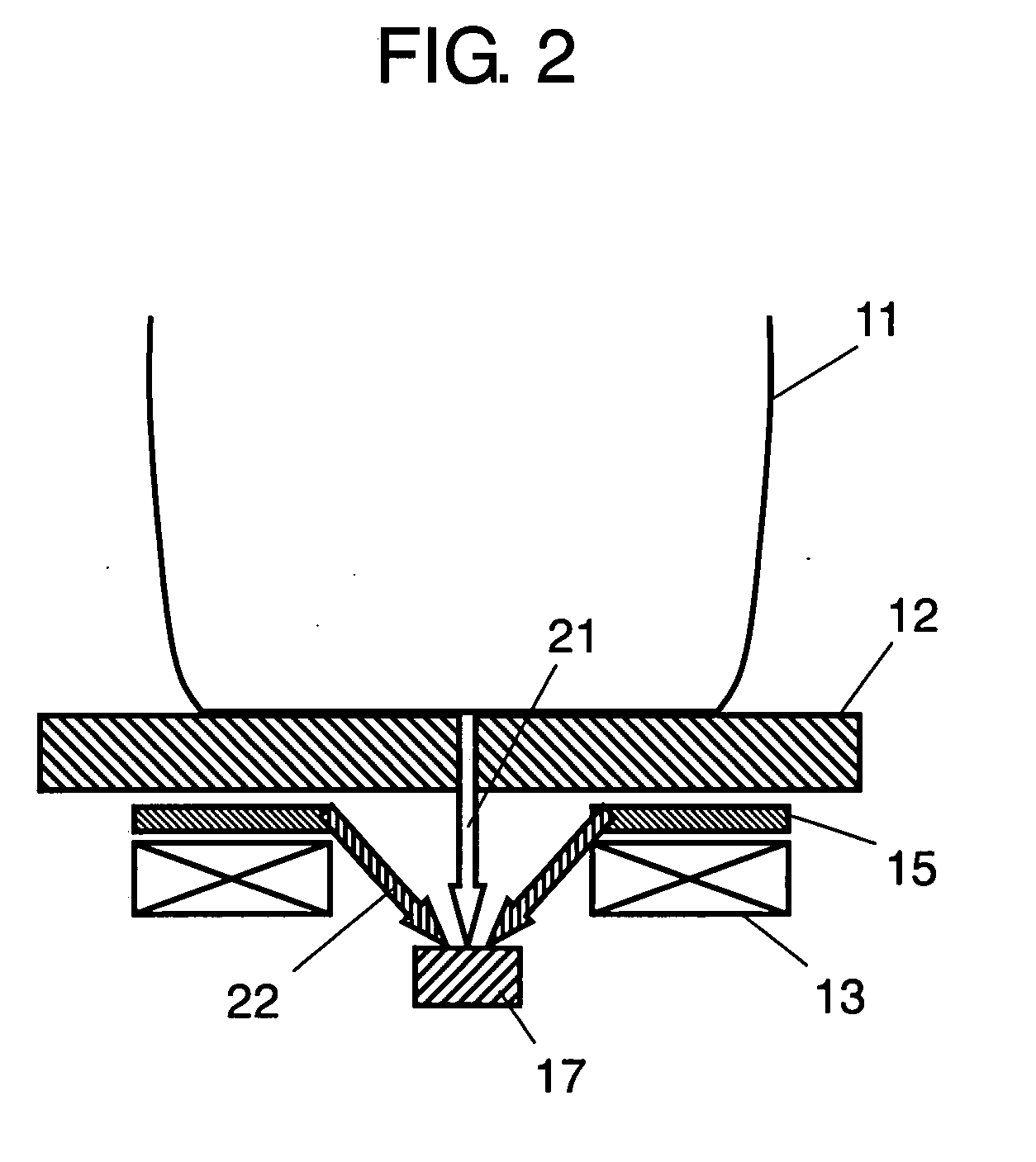Induction Heating Cooker
a technology for induction heating and cookers, which is applied in the direction of induction heating, electric/magnetic/electromagnetic heating, induction heating control, etc., can solve the problems of insufficient heating power, poor cooking performance, and high electrical conductivity, so as to reduce the buoyancy effect of the pot and reduce the electrical conductivity. , the effect of high electrical conductivity
- Summary
- Abstract
- Description
- Claims
- Application Information
AI Technical Summary
Benefits of technology
Problems solved by technology
Method used
Image
Examples
first exemplary embodiment
[0033]FIG. 1 is a cross sectional view of an induction heating cooker in accordance with a first embodiment of the present invention, which shows the concept of structure. FIG. 2 is a cross sectional view which shows infrared radiations from pot 11 and buoyancy reducing plate 15. Top plate 12 places pot 11 thereon. Heating coil (hereinafter referred as “coil”) 13 is disposed underneath top plate 12 and heats pot 11 by means of induction heating. Inverter circuit 14 supplies a high frequency current higher than 20 kHz to coil 13. Buoyancy reducing plate 15 is made of aluminum, copper or the like non-magnetic metal having a high electrical conductivity comparable to or higher than that of aluminum, and is disposed between top plate 12 and coil 13. The buoyancy reducing plate alleviates the buoyancy which works to a current induced in pot 11 by magnetic flux generated by coil 13 during an induction-heating of pot 11. Describing practically, buoyancy reducing plate 15 reduces a floating...
second exemplary embodiment
[0045]FIG. 4 is a cross sectional view showing the structural outline of an induction heating cooker in accordance with a second embodiment of the present invention. Those portions identical to those of the first embodiment are designated with the same symbols, and detailed description thereon is eliminated. The point of difference as compared with the first embodiment is that controller 23 is provided in place of controller 20, and time counter 24 and informer 25 is provided additionally.
[0046] Controller 23 configured to control an automatic cooking scheme, controls an output from inverter circuit 14 based on the outputs from discriminator 16, temperature calculator 18 and first temperature sensor 19 in accordance with a certain specific algorithm. Time counter 24 counts the time of heating a pot which is made of a non-magnetic metal material having the high electrical conductivity in a state that the pot is recognized by discriminator 16 to be made of such a material. Informer 2...
PUM
| Property | Measurement | Unit |
|---|---|---|
| temperature | aaaaa | aaaaa |
| temperature | aaaaa | aaaaa |
| frequency | aaaaa | aaaaa |
Abstract
Description
Claims
Application Information
 Login to View More
Login to View More - R&D
- Intellectual Property
- Life Sciences
- Materials
- Tech Scout
- Unparalleled Data Quality
- Higher Quality Content
- 60% Fewer Hallucinations
Browse by: Latest US Patents, China's latest patents, Technical Efficacy Thesaurus, Application Domain, Technology Topic, Popular Technical Reports.
© 2025 PatSnap. All rights reserved.Legal|Privacy policy|Modern Slavery Act Transparency Statement|Sitemap|About US| Contact US: help@patsnap.com



